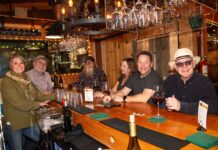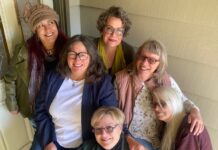Like peeling an onion, the work of reconstructing history seems never to end. New tidbits appear serendipitously and constantly.
Let me close the year by sharing a sample of such footnotes that have corrected or enhanced tales told in several past columns.
- The first piece I wrote for the Town Crier a decade ago recalled my grandfather’s speculative 1925 purchase and subdivision of the 30 acres in Hall Canyon that now constitute the James Reserve.
At the time I knew that lack of a reliable water supply had doomed his plan to sell cabin lots, but I didn’t know how or when he’d disposed of the property. Then one day I was visiting the reserve and happened upon the 1942 grant deed to Grace James with my grandparents’ signatures. So they’d held on to their interest in the land for 16 disappointing years before a buyer came along.
- In 2010, I wrote about the many summer camps in or near Idyllwild. At that time I’d documented nearly two dozen but then I learned of three more camps:
A museum docent mentioned attending Habonim Camp Gilboa, a Jewish youth camp at the foot of Lower Pine Crest Avenue. Its site was eventually absorbed into Idyllwild Pines, but its memory persists there in the names of Gilboa Hall, Amphitheater and Court.
Old newspapers, recently posted online, alerted me to Camp Starbright, which was operated in the 1920s by the Riverside YWCA on creekside land in the Pine Dell neighborhood.
I had long been puzzled by 1950s-era post cards labeled “JMV Pathfinders Camp,” until just last month when an auction ad on eBay mentioned the name in connection with the Seventh Day Adventist Church.
Sure enough, the Adventists ran the Garner Valley camp for kids in its “Junior Missionary Volunteer” groups from 1932 to 1961, when Pine Springs Ranch in Apple Canyon replaced it.
Five years later, the Boys Club of Palm Springs bought the original camp, which lives on as Pathfinder Ranch.
- Last year, I traced the history of the Idyllwild Arts campus, but missed one chapter. A museum visitor reported that his family operated a turkey farm there in the 1920s, a fact now readily available in online Riverside newspapers.
- In discussing Ernie Maxwell’s legacy, I mentioned mysterious tracks I’d seen defacing a trail above Long Valley. They’re even more pronounced this year, and the explanation provided by State Park rangers is both comforting and troubling. The cause is not vandalism, but official park activity: the tracks are created by a nonmotorized conveyance used for transporting tools and materials to a worksite in Round Valley.
- After writing about the seminal events that shaped our village in 1946, I soon happened upon another while rummaging in old Town Criers. That year saw the inauguration of the “Gold Strike” carnival, which started a postwar tradition of village festivals like today’s Lemon Lily Festival, Earth Fair, film and jazz festivals, and many more.
- Following up my stories on the 1920s golf course war between Idyllwild developers Walter Wood and C.L. Emerson, John Jones of the Golf Historical Society in Los Angeles provided interesting details.
Both developers hired legendary golf-course architects to plan the local courses, John Duncan Dunn for Wood’s course on Saunders Meadow, Max Behr to upgrade Emerson’s pitch-and-putt layout on Tollgate Road. By the time Emerson’s full course was completed, 2,000 trees were removed and 3,000 more trimmed up.
- Finally, Dr. Rudolf Schmid at Berkeley clarified that he does not work alone studying the Black Mountain sequoia grove. He enjoys the able collaboration of his colleague (and daughter) Mena Schmid, who takes leave of her Boston day job as a computer software engineer to pursue the research here. She’d fit right into our community of multitalented Hill dwellers.











Hello Robert,
I just came across this Town Crier article mentioning Habonim Camp Gilboa. Yes, we were at the end of Lower Pine Crest Road starting in the spring of 1969. We ran summer (and winter) camps there through 1986. Financial hardships caused us to cancel camp that year, and by 1988, we sold the 13 acre property to Idyllwild Pines. Even Older Timers may remember Henry Didnis, who owned the property before that. He called it "Camp Hi".
I have many fond memories of the camp! Since my parents helped run the organization, I spent much time there, preparing for the summer, during, and after. The hardware store and several restaurants in town got a lot of our business.
The group "Habonim" is now "Habonim-Dror", and locally it now owns a camp across the way in Big Bear. It's an international organization in 20 countries, with 7 camps throughout North America.
Best,
Ron Orenstein
[email protected]
Somehow I came across this page. I went to that Camp Habonim Camp Gilboa in the late 60’s and 1970. Still have pictures from there. WOW, long ago. Too bad they don’t have a site for the old pictures from that camp.